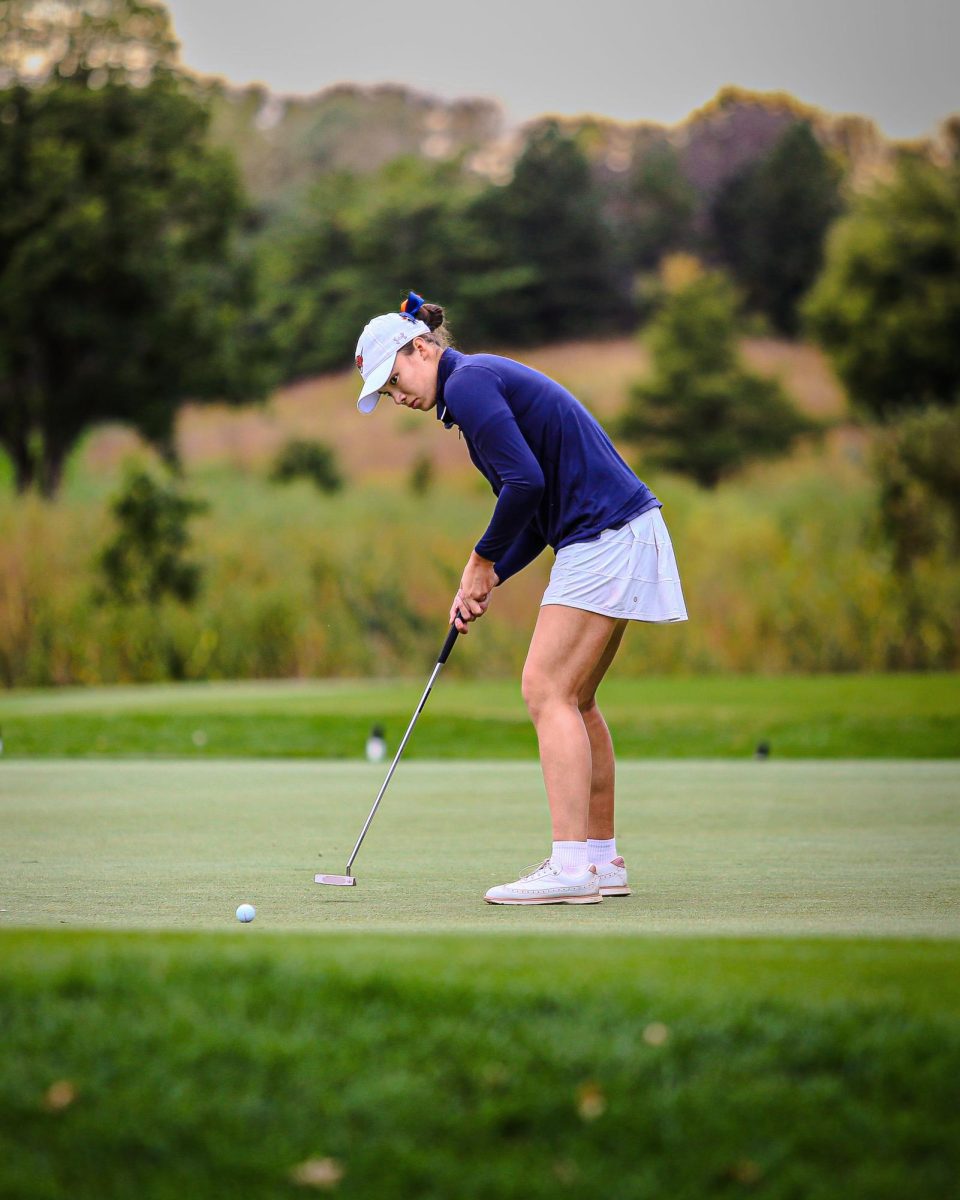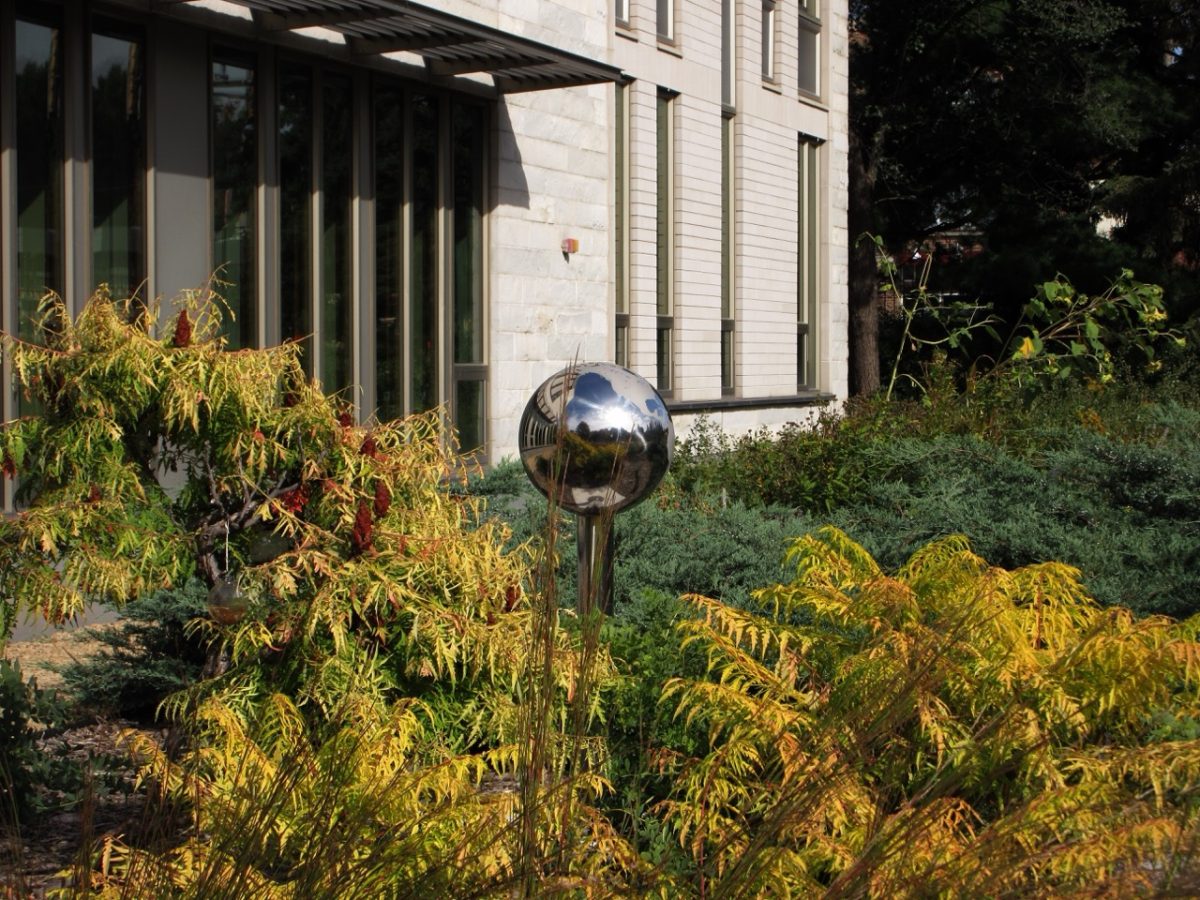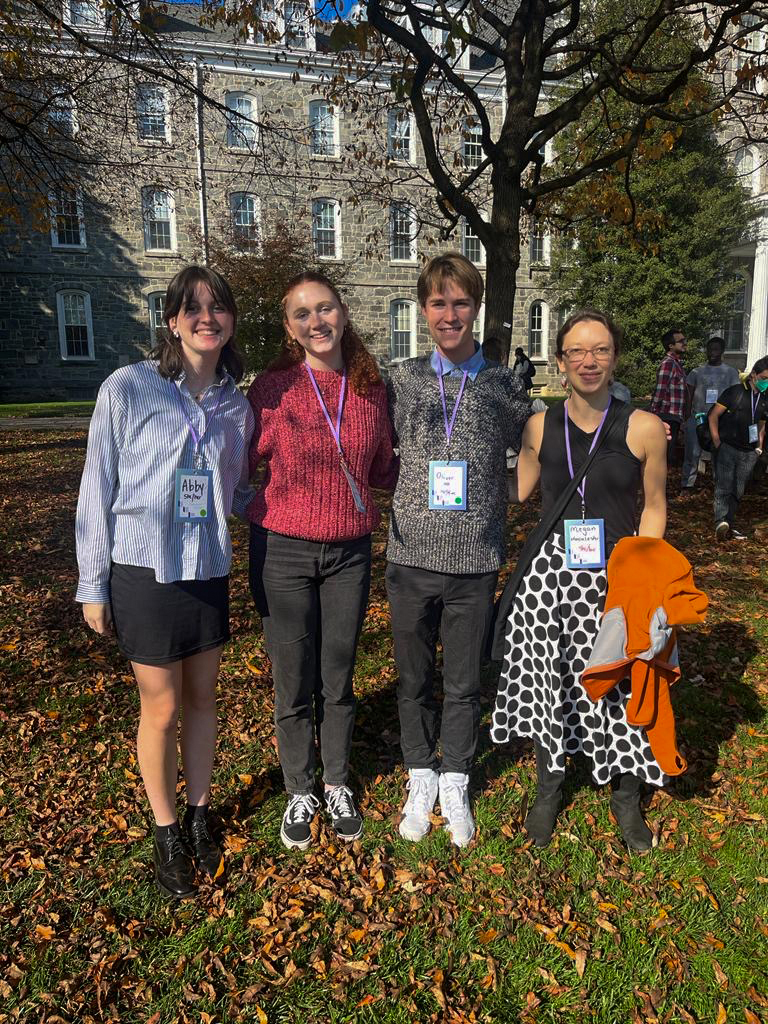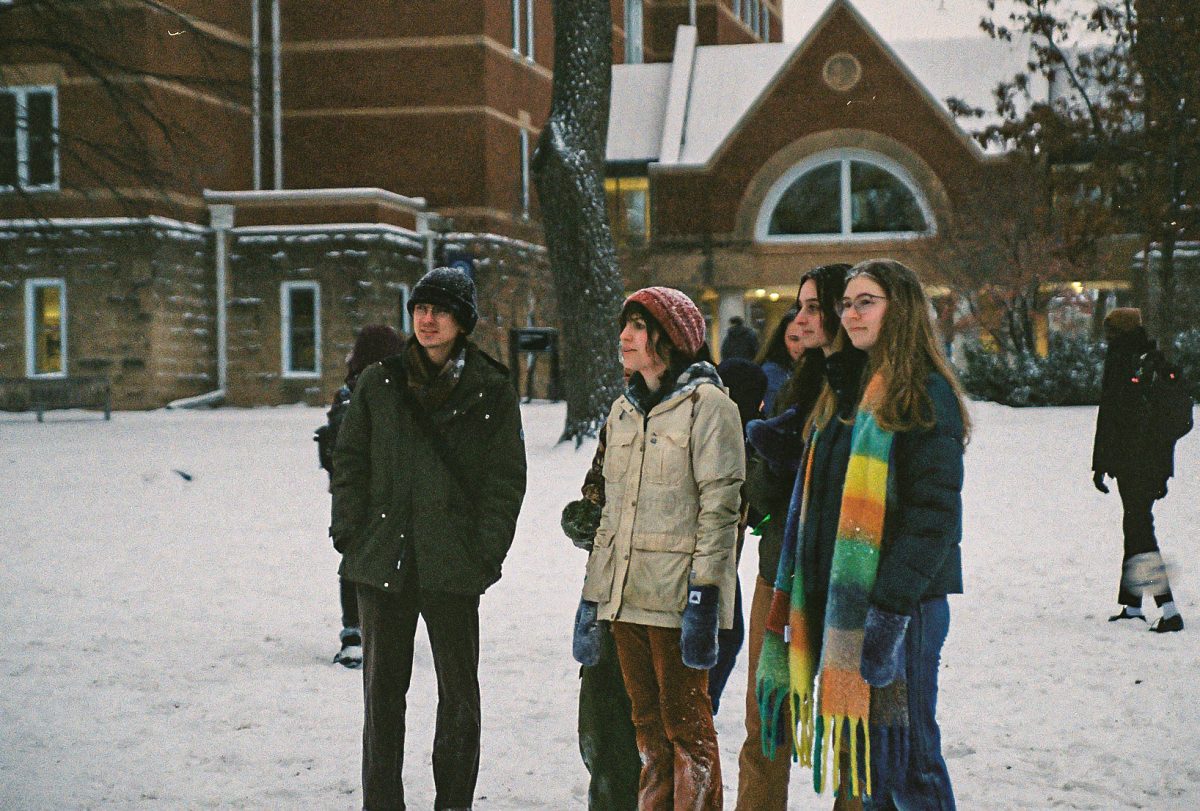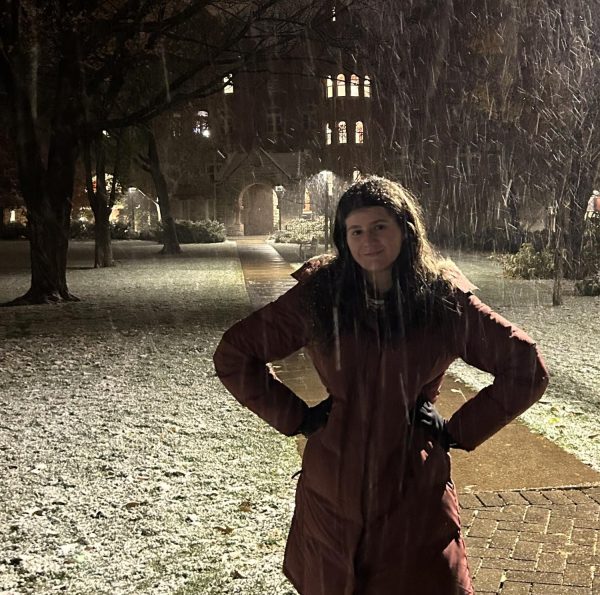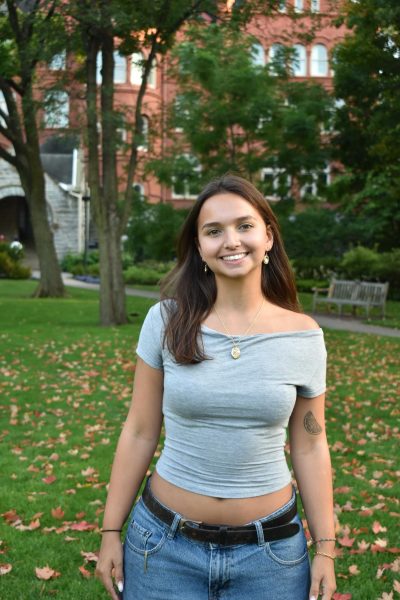Of the 41 tenure-track professors hired at Macalester since September 2019, all but three were women or people of color. According to the 2019 faculty salary audit report, there are no peer-to-peer disparities in faculty salaries between white and non-white faculty. Macalester’s commitment to a diverse faculty body is clear.
But for many Black, Indigenous and Person of Color (BIPOC) faculty members, the college still must make strides to retain and support faculty of color. Provost Lisa Anderson- Levy summarized the issue: “the short answer is: we can do better.”
“There’s this weird combination of visibility and invisibility that happens with the faculty of color,” Brian Lozenski, chair of the educational studies department, said. “There’s a visibility that creeps up when you’re asked to participate in promotional events and recruiting events to bring young students of color to campus.
“And then that’s mixed with an invisibility around what’s the interiority of how we might experience being here in a predominantly white institution. And when I say ‘predominantly white institution,’ I don’t necessarily just mean demographics. I also mean culturally [and in terms of] power and decision-making processes [and] how race is structured into society. Macalester still fits within that.”
The term “invisible service” describes the work professors of color do that isn’t traditionally considered during tenure reviews. Often, that manifests as doing a disproportionate amount of advising work, particularly for students of color, much of it unofficial.
“There’s a tension between doing my core [job] functions … and feeling like I should do more to change the field and support the BIPOC students that I encounter in my classes,” computer science Professor Getiria Osongo, who’s taught at Macalester for almost a decade, said. “That usually manifests in having to do invisible service, which I’m happy to do. But that also affects how you can do your regular job, considering there are only 24 hours in a day.”
For some professors of color, the opportunity to support students who seek their advice because of their similar identities is part of why they chose to work at a liberal arts college. But the line between what is and isn’t a professor’s responsibility is often blurred.
“Because I’m a woman of color, it feels like students who are also of marginalized backgrounds have just kind of flocked to me,” a non-tenured professor who asked to remain anonymous in order to speak candidly explained. “It has been very difficult — in office hours especially — to distinguish between providing emotional support for students and providing academic support for them.”
This advising demands time; time that professors who don’t perform invisible service can spend on academic research, which is vital to seeking tenure. Macalester offers space for professors to describe the invisible service they do in their annual addendums, which tenure review committees look at during tenure reviews. Still, the burden falls on these professors to do this documentation, which can feel impractical.
“I’m walking to class, I get a student who wants to come and talk to me about something, they stop by my office, I spend half an hour talking to them,” Osongo said. “I can’t possibly document all those interactions, and then it shifts the labor to me to actually document this work.”
Under tenure considerations, the faculty handbook specifically mentions “advising that arises when students seek out the faculty member based on, for example, race/ethnicity, sexual orientation, national origin, disability, etc., for advice, mentorship, guidance, or other assistance with curricular, co-curricular, or personal concerns.” Tenured colleagues often observe and make note in tenure reviews (the process before faculty are granted tenure) when they see junior faculty assume heavier advising burdens.
“It’s a problem when a small number of faculty are shouldering a disproportionate burden, of a lot of work that takes up a lot of time,” Psychology Professor and Director of the Jan Serie Center for Scholarship and Teaching Joan Ostrove said. “It’s not that anybody would say [that] … they should say no to students, they shouldn’t go to Adelante and BLAC … I don’t want to protect pre-tenure colleagues from the very thing that’s going to make their lives as professors really meaningful here, [but] I want them to be scholars and have enough time to do their scholarly work without getting burnt out and overwhelmed. That’s a fine line.”
While invisible service is underrecognized in tenure, end-of-course evaluations by students are formally tied to those processes.
There’s a wide body of research demonstrating that professors who are women or people of color are rated disproportionately lower on end-of-course evaluations than their white, male counterparts. This is something Macalester acknowledges with a note informing students of these biases before they complete the evaluations.
“These biases are really deeply entrenched, and having a statement on the top of those evaluations doesn’t necessarily get at the root cause of where these responses are coming from,” a non-tenured professor who was granted anonymity in order to speak candidly said. “Often, it feels like those evaluations are less about the expertise of the professor or the ability of the professor to adequately convey that material and teach students, but are much more about professors as individuals, and that difference is really important in allowing those biases to seep in.”
When feedback is grounded and actionable, it can be a useful tool. But the downsides — sometimes including personal, vitriolic attacks — nearly always fall on women and BIPOC professors.
“I think all pre-tenure faculty and all non-tenure track faculty feel very concerned about the role that end-of-course surveys play in their capacity to stay here at Macalester,” Ostrove said. “They feel like high-stakes evaluations, even though, for pre-tenure colleagues, they do not have to submit any of those end-of-course surveys as part of their tenure dossier files. But the department chairs see those and write annual evaluations based on those.”
Osongo recalled: “When I was pre-tenure, going through the tenure process, I knew that the course surveys were causing me more stress than they should.”
That’s part of why he’s leading a group to change the way course evaluations work, particularly in making them focus on tangible teaching and learning rather than evaluations of the professors themselves. He explained that questions often boil down to how much the student liked the professor personally, which isn’t a direct correlation to the learning done in class.
“Some things we do in teaching are not fun,” he said. “You just have to work harder. And students, in my experience, prefer classes that are easier to get an A [in].”
While this issue isn’t unique to BIPOC faculty, some see their pedagogical practices questioned more than those of their white colleagues, inside and out of course surveys. In her first semester at Macalester, a professor of color described her experience with students as a kind of hazing.
“To have students question my pedagogical methods very directly and with accusations attached to those questions, that has been really surprising,” she said. “Other faculty have also talked about it as hazing, where, if you’re new and you’re a woman and you look young, and [you’re a] woman of color on top of all of that, it seems like it’s a pattern here where white students tend to haze their faculty members in a strange way.”
Students have asked her to change her syllabus and her assignments.
“I think that students, with me at least, have really pushed the bounds in terms of trying to make me prove myself and prove that I’ve earned my place here,” she said.
In his first year teaching at Mac, a student yelled at Professor Osongo during his office hours.
“One of my colleagues from down the hall had to come out of the office and come and calm the student down,” Professor Osongo said. “The student was yelling at me that this is not how you teach, and that I am a terrible professor, essentially. When I brought this up in my department, none of my white colleagues said they’d experienced this before. And this is just one example. I have seen interactions where the question that comes to mind is: if this was a white male professor, would they be treated that way?”
“One of the main challenges that BIPOC faculty face … is the extra work of presenting ourselves as legitimate,” one of the aforementioned anonymous professors said.
That’s a burden that drives professors to leave Macalester, and it’s one that falls on professors of color, particularly women of color.
“[Macalester needs to] commit to helping everyone who goes to school here, who works here, who lives here, to unlearning our deeply held assumptions about what a college professor looks like,” he continued. “I think that is much more important in supporting BIPOC faculty than more surface-level programs or initiatives.”
For some professors, students calling each other out when they see disrespectful behavior is one of most effective ways to support professors. But that’s not something they see happen frequently at Macalester.
Some students arrive at Macalester having never been taught by a person of color. In contrast to the more traditional challenge of supporting a predominantly white faculty in teaching students of color, here the challenge is “working with students to see and recognize a wider variety of faculty as competent and skilled at what they do,” Provost Anderson-Levy said.
“[Macalester] thinks a lot about how to support faculty to be as effective as possible with a diverse student body, how to ensure that our teaching practices and our teaching philosophies and our course syllabi and our examples … [support] a wide range of students to thrive and see themselves as scholars,” Professor Ostrove said.
“Of course, people vary widely on their capacity to do that and their interest in doing that, but it’s a big thing in higher ed,” she continued. “I feel like we haven’t done the flip [side] quite as much, which is to think about how to support the student body to engage with and recognize the expertise, scholarly contributions, pedagogical practice and presence of a diverse faculty.”


